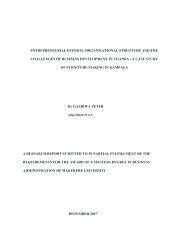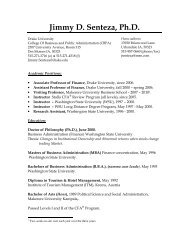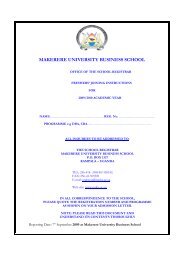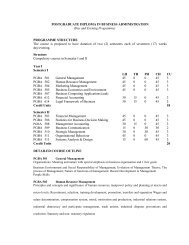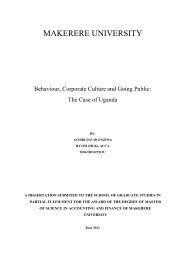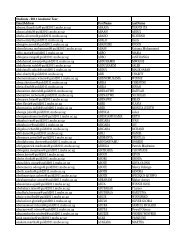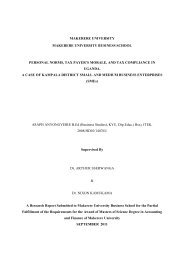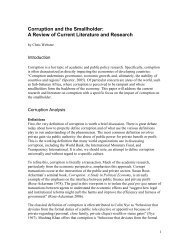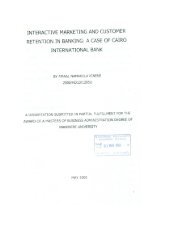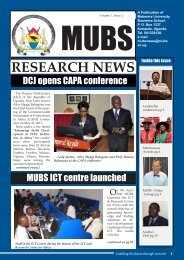13th Annual International Management Conference Proceeding
13th Annual International Management Conference Proceeding
13th Annual International Management Conference Proceeding
Create successful ePaper yourself
Turn your PDF publications into a flip-book with our unique Google optimized e-Paper software.
Key to Figure<br />
A - More capital investments; B - Increase in profits; C - New products services; D - Increase in sales; E -<br />
New product designs; F - Quality improvement; G - New business activities; H - Good customer service; I -<br />
Accounting system/record keeping; J - Improvement in management style; K - Business planning/budgeting;<br />
L - Employment of qualified staff; M - Business expansion; N - Market research; O - Cost reduction<br />
through staff reduction.<br />
The percentage shown in the table for each business improvement was calculated based on the 30<br />
respondents who were interviewed.<br />
Other Factors which Affected Business Performance and Growth<br />
The respondents identified several other factors (Table 3) besides training, which affected their business in<br />
terms of improvements. The other factors identified were personal/business experience (37%); personal<br />
efforts and drive (27%); acquisition of additional skills (23%); business problems/challenges (20%); family<br />
support and assistance (17%); established customer base and available market/business opportunities<br />
(13%); credit acquisition (10%); provision of quality products/services and personal creativity (7%). Those<br />
who never made any significant business improvements to their business cited economic instability and<br />
competition from well-established businesses, as the main factors that affected their business performance.<br />
Factor No. of Respondents Score in Percentage<br />
Personal/business experience 11 37%<br />
Personal commitment and drive 8 27%<br />
Other training programmes 7 23%<br />
Business problems/challenges 6 20%<br />
Family support/assistance 5 17%<br />
Established customer base 5 17%<br />
Market/business opportunities 4 13%<br />
Credit acquisition 3 10%<br />
Quality product/service 2 7%<br />
One’s own creativity 2 7%<br />
Table 3: Other Factors that contributed to the Improvements and Growth of the Enterprises<br />
Under the other factors, which affected performance improvements in their businesses, the respondents were<br />
also asked to state the critical problems/challenges, which affected their business performance and growth<br />
(Table 4). The problems/challenges cited were inadequate capital (80%) as a major problem; competition<br />
(50%); inadequate market opportunities (23%); economic instability (23%); inaccessibility to modern<br />
technology and bad debts (17%); high operational costs (7%) and, poor credit and stock control (3%).<br />
Problem No. of Respondents Score in Percentage<br />
Inadequate capital 24 80%<br />
Competition 15 50%<br />
Inadequate market 7 23%<br />
Economic instability 7 23%<br />
Inaccessibility to modern technology 5 17%<br />
Bad debts 5 17%<br />
High operational costs 2 7%<br />
Poor credit and stock control 1 3%<br />
Table 4: Problems/Challenges, which affected Business Performance<br />
From the analysis, it can be said that business performance cannot be wholly attributed to one single factor.<br />
As the study findings revealed, no respondent was able to distinguish between business improvements made<br />
as a result of the training alone and those made as a result of other factors. This finding also confirms a<br />
contention by Odiorne (1970), that a major limitation on evaluating training programmes is the existence of<br />
other factors, which may have occurred at the same time with the training. So business improvements made<br />
cannot be ascribed to the training programme alone unless one is certain that no such other factors<br />
88



